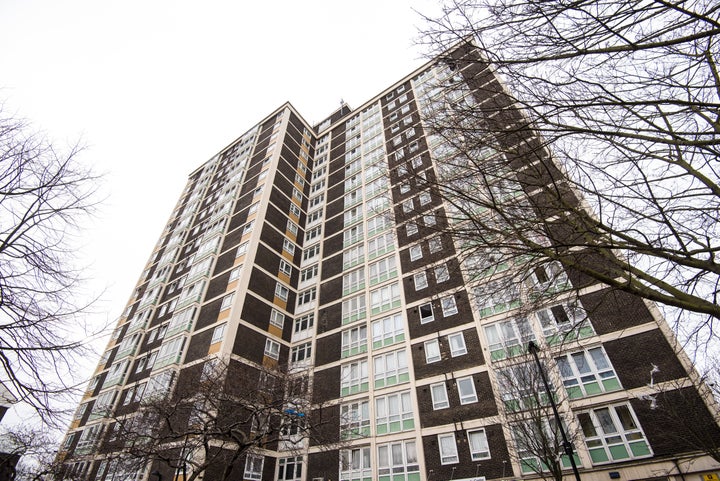
The scale of the housing crisis is not lost on Theresa May. In a major speech yesterday to the housing association sector, she acknowledged that it ‘remains one of the great challenges of our time’. The product, May said, of ‘decades of neglect’, the housing crisis did not ‘come about overnight’, but rather has emerged because for ’too long and under successive governments’, social housing ’has been pushed to the edge of the political debate’.
However, while May’s speech marked a thaw in relations between government and housing associations perhaps, it was hardly a turning point for the millions of people made miserable by their housing situation. These people – the 1.2 million people on social housing waiting lists, or the 79,000 households in inadequate, temporary ‘B&B’ accommodation, or the almost 5,000 a night who sleep rough on the streets – suffer the worst of the housing crisis, and the policy neglect.
At the conference, the prime minister (again) asserted that it is her ‘personal mission to fix our broken housing system’. But perhaps for the first time, her words came close to matching the scale of her ambition.
But what is missing, and has been missing entirely from May-era housing policy, is anything like the level of investment, or bold policy-solutions, to make this happen.
May’s rabbit-in-the-hat was an additional 2bn funding for affordable housing. Considering the scale of the crisis, this is almost pitiful. It will build just 40,000 new affordable homes, when we have a need for more than a million. And the funding itself won’t be available until 2022, at which point are very likely to have a different government and/or prime minister.
Despite this, the speech and announcement were met with solid ‘praise’ from Housing Association chiefs. This is perhaps because social housing in general, and Housing Associations in particular, were held in such low regard during the Cameron/Osborne era, that now, anything is better than nothing. And with almost no mention of local authorities and social-rented council housing - the primary vehicle for successfully solving housing crises in the 20th century - housing associations are clearly central to her housing strategy.
The warm reception may also be because the funding is not attached to any particular type of home. For almost a decade now instead of just ‘social housing’, social housing providers have been building a range of different ‘affordable products’. These homes often cost up to 80% market rent, making them unaffordable to many people in need of social housing, and are less secure than traditional social rent. Many housing associations have also been busy converting existing, genuinely affordable, secure social housing homes into less affordable, less secure ‘affordable’ housing.
As austerity became entrenched in social housing policy, and government funding almost completely dried up, larger housing associations developed a new means of building affordable housing: cross subsidy. Funding-deprived housing associations began building expensive private market homes for sale on a site, and using some of the proceeds from the sale to fund some affordable housing. This affordable housing would usually be closer to market rent, or shared ownership homes, rather than genuinely affordable, social tenancies. There would also be a lot less of it. In addition, housing associations would often just purchase the new affordable homes produced by private developers to meet their planning obligations, and not actually contribute many more affordable homes themselves.
For a number of years, big housing associations have been behaving more and more like private developers. May was quite right yesterday when she said they are ‘major multi-billion pound businesses’. And as the number of homes they build increases, their new model is proving so lucrative that private providers, pension funds and other investors are coming along for the ride, reinventing themselves as ‘affordable housing developers’, seeing a clear business opportunity for doing something that apparently has a social purpose. But the homes they are building are not the houses we need, and the social purpose is often harder and harder to see. By far the greatest need is for social housing, and we are building the lowest levels of that since the Second World War, despite the pretty high housing outputs of housing associations.
Yesterday’s speech, and its announcement of funding for housing associations, might be good news for bigger housing associations. It helps secure their long-term future, growth and business model. But whether it is the same unalloyed good for the millions of people whose lives are most damaged by the housing crisis, is another question. What is good for housing associations’ balance sheets is not necessarily what is going to solve the housing crisis.
It is occasionally said that housing associations have lost their ‘social purpose’. As they look and act more and more like private property developers, and they build fewer and fewer social rented homes, it is easy to see why.
If May is going to fulfill her ‘personal mission’ and start to solve the housing crisis, she will need to rapidly ramp up funding for social housing to levels much higher than they currently are, and match words with action. And if housing associations want to regain their social purpose, the largest among them should be leading the call for investment social rented housing before everything else, and taking the challenge to government.
